Our American friends are visiting us for the first time - triathlon friends who understand the language of early morning training sessions and the peculiar satisfaction of logging miles across three disciplines. Yes, we are part of that dedicated tribe of athletes who bike, run, and swim regularly, occasionally testing ourselves in races. While they still chase coveted Kona spots—the pinnacle of Ironman distance racing— we've transitioned to simply enjoying the athleticism of training, finding joy in the movement itself.
A transition that may change, but is currently one we are embracing as full-time nomads.
One of many transitions that have shaped our lives.
Some people have called me crazy over the years for my dedication to this sport, particularly as we compete as older athletes. But yesterday, hiking through Curral das Freiras—Nuns Valley—I was reminded that embracing the seemingly impossible has always been part of the human experience.
This was my first time in the valley, though it certainly won't be my last. The picturesque mountains tower over the small village below in protective solitude, creating a natural fortress that has sheltered souls for centuries. The valley earned its name in the 16th century when Franciscan nuns from the Santa Clara Convent in Funchal fled here to escape relentless pirate attacks. Faced with the terrifying reality of coastal raids, these women made an extraordinary transition…they abandoned their established lives by the sea and crossed treacherous mountain passes to find safety in this remote crater.
Like many visitors to Madeira, we had planned our day carefully, but a potential rainstorm the following day forced us to pivot. Living here, we're constantly overwhelmed by choice, trying to select activities for visiting friends is like choosing your favorite flower in a florist shop. Every trail, every viewpoint, every hidden corner of this island offers its own breathtaking beauty.
This spontaneous transition, a 20-minute bolt ride later, and being dropped off where we didn’t expect or know the area, led us on an adventure that also led us up and down some of the most stunning cliffs on the island, with chestnut ice cream as an unexpected bonus discovery at the trek's end. We had just enough time to swim some laps before dinner, a sentence any triathlete understands completely. To others, it's insanity to squeeze in another "workout" after completing one, but this active lifestyle is precisely what we want in our fifties. Because we've always been active, we can still embrace these moments.
As I write this, friends of ours are starting Ironman Wisconsin—many of them in their sixties, still competing with the fierce determination that defines our sport.
We were still in the pool at 6 PM when my husband glanced at his waterproof watch used to track our distance in the water and announced we needed to leave in forty minutes.
"No problem," they replied.
Mike grinned. "It's all about the transition time."
And there was that word again: transition.
In triathlon, transitions are sacred spaces with clinical names—T1 and T2. T1 marks the shift from swim to bike: you emerge from the water, sometimes wrestling out of a wetsuit while your hands are still numb from cold water, fumbling with bike shoes and helmet before grabbing your bike and moving through the designated area. T2 reverses the process—bike shoes off, running shoes on, helmet hung up, legs finding their rhythm after hours in the saddle.
These transition zones buzz with nervous energy. Every athlete sets up their small rectangle of space, laying out gear with the precision of a surgeon's instruments. The clock never stops. Every second spent in transition counts toward your final time. The difference between a smooth transition and a fumbling one can determine whether you reach the podium or simply finish with personal satisfaction.
Elite athletes train their transitions obsessively, practicing the choreography until each movement becomes muscle memory. They can strip off a wetsuit, slip into bike shoes, and be pedaling away in under a minute. But here's what's fascinating: many spend far more time than necessary in these transition areas. Not because they lack skill, but because of fear. Afraid to leave the safety of preparation and step onto the course where our training will be tested.
The transition zone can become a comfortable prison. You can fiddle endlessly with your gear, double-check your nutrition, and adjust your bike computer settings. You can convince yourself you're still preparing when you're actually avoiding the vulnerability of racing. Some athletes spend so long in T1 that they watch wave after wave of competitors disappear onto the bike course while they remain safely in the preparation zone.
This mirrors exactly what we did in our real lives when we sold everything to start this grand adventure. We transitioned from our safe, predictable, comfortable world and traded it for the unknown territory of "trusting our training"—a phrase my coach used to drill into me. Trust the work you put in to get here. Trust the process of slow adaptations your body makes to build the strength you need. Challenge the thoughts that whisper this is crazy, irrational, too hard. Get to the start line.
At dinner, we explored this metaphor further, discussing how difficult it is for many people to transition from working to retiring, from saving to spending, from dreaming to doing. The familiar feels safe, even when it no longer serves us. Many of our friends in their sixties have no intention of retiring soon—not because they can't afford to, but because they can't bear to leave the transition zone of "someday planning" and step onto the course of "actually living."
We've met others here on the island who retired in their fifties, who made the leap before an illness forced their hand. They trusted their life training enough to book the trip and go, rather than endlessly circling the transition area of preparation.
The nuns of Curral das Freiras understood this centuries ago. When pirates threatened their coastal sanctuary, they didn't spend years debating the risks of mountain crossing versus the certainty of attack. They gathered their courage, trusted their faith, and made one of the most dramatic transitions in Madeiran history. They left everything familiar behind and carved out new lives in an isolated valley that seemed impossible to reach and even more impossible to thrive in.
Yet thrive they did. The valley that sheltered them became legendary for its beauty and its chestnuts, its silence and its sanctuary. What initially seemed like escape became transformation. Their transition wasn't just about avoiding danger—it was about discovering what lay beyond fear.
As lifelong athletes, we love these metaphors of training and life. We recounted stories of my qualifying for Boston the same year I completed my first Ironman, the years of preparation that made those single days possible. People often see only the accomplishment—the medal, the finish time, the qualification—and say, "I wish I could do that." They don't see the years of early morning runs, the brick workouts, the cramps, the dedication to a process that takes infinitely longer than race day itself.
Life mirrors this perfectly. We prepare, then prepare some more, then question when we've prepared enough to actually transition from practicing life to living it. When is it enough money? When will conditions be perfect? When will we be ready?
But here's the truth every triathlete learns: time moves whether you're on the course or stuck in transition. The difference is that transition time counts against you while course time, however challenging, counts toward your goal. Every minute spent endlessly adjusting your gear, second-guessing your preparation, or waiting for perfect conditions is a minute not spent moving toward your finish line.
The most successful triathletes (and the most fulfilled people) learn to trust their training and step onto the course. They understand that preparation has its place, but perfection is not required to begin. The course will teach you things that transition zones never can: how to handle unexpected challenges, how to push through discomfort, how to discover reserves of strength you never knew you possessed.
Sometimes, like those brave nuns fleeing to their mountain sanctuary, life calls for dramatic transitions. Pirates may not be attacking your literal shores, but metaphorical ones might be threatening the safety of "someday." The question becomes: will you trust your training enough to cross the mountains into unknown territory? Or will you remain in the familiar transition zone, endlessly preparing for a race you never quite start?
The mountains of Madeira still echo with the courage of women who chose the uncertain path over the dangerous familiar. Their valley stands as proof that sometimes the most frightening transitions lead to the most beautiful destinations.
Time is always moving forward. The choice is whether you'll spend it in transition or on the course of the one life you have to live.
I would love to hear your thoughts on where you are in life. Starting line…? Transition…? In the middle of the course? Drop a comment and share where you are in the course of life.


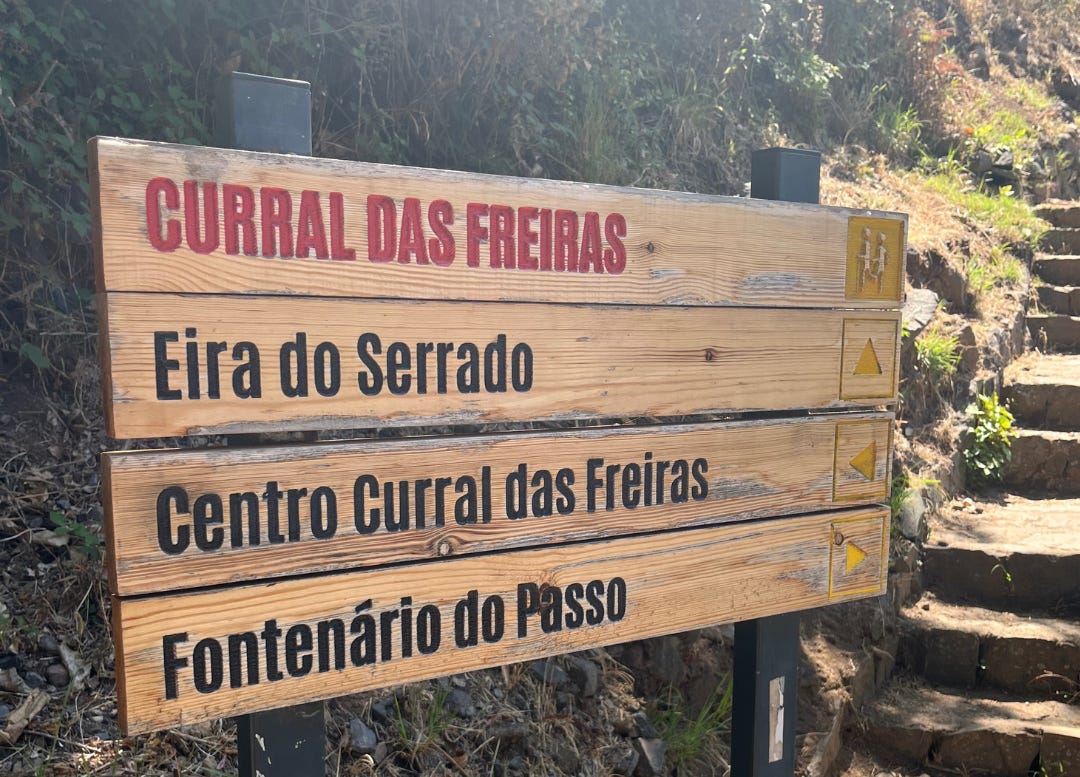
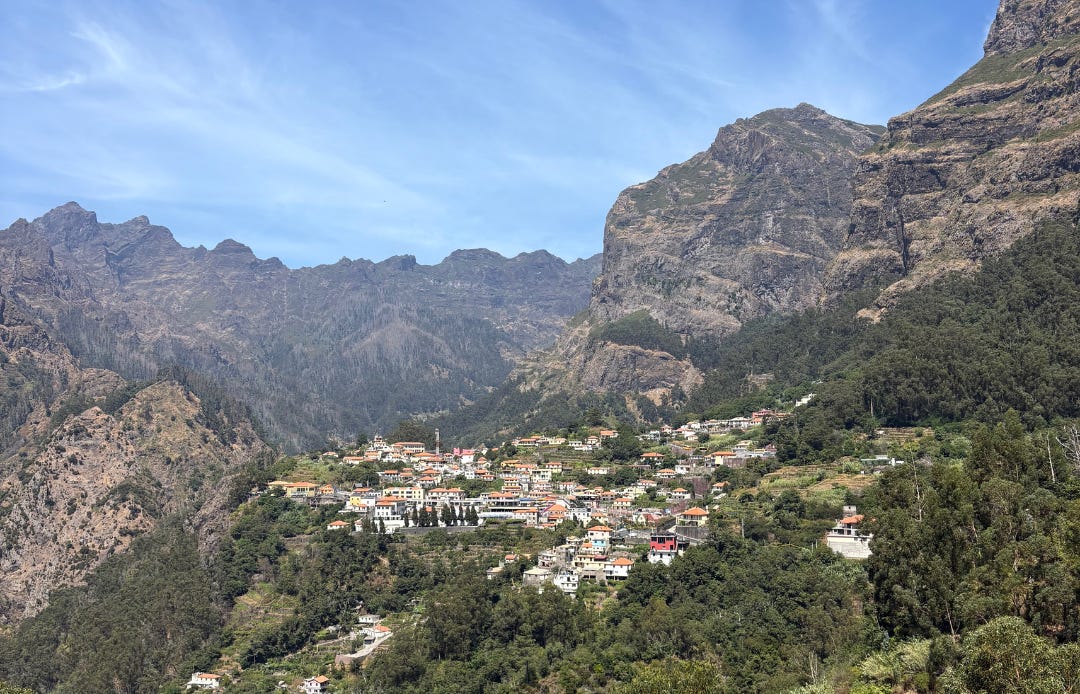

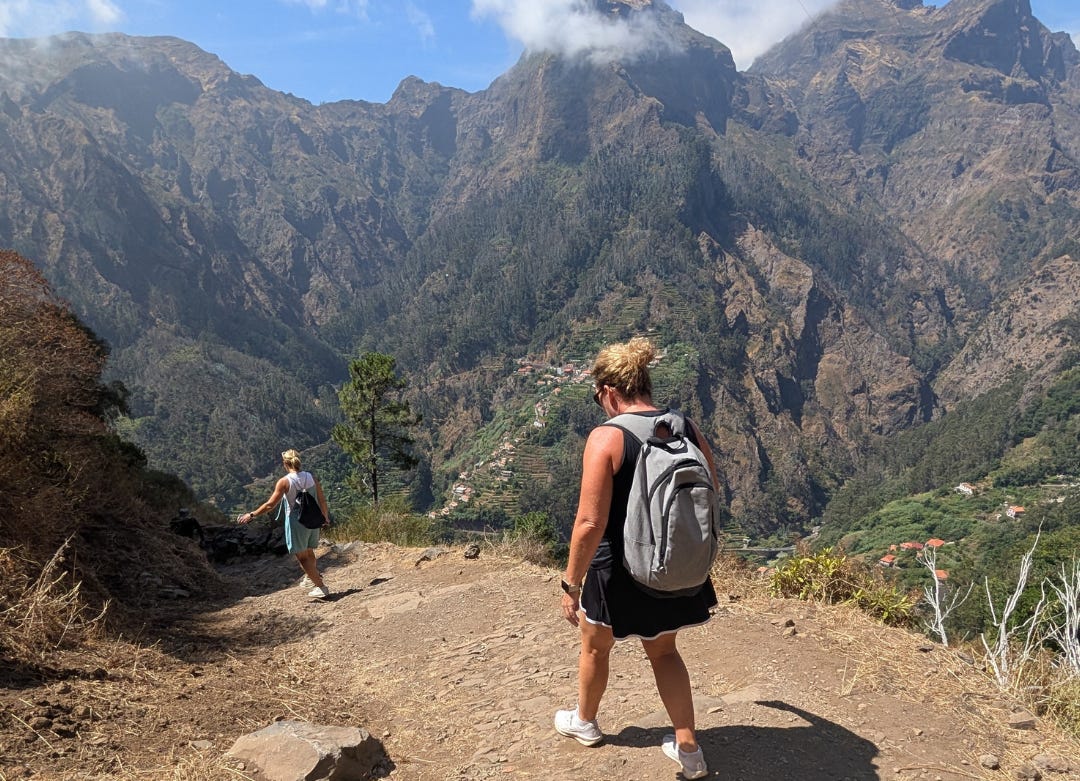
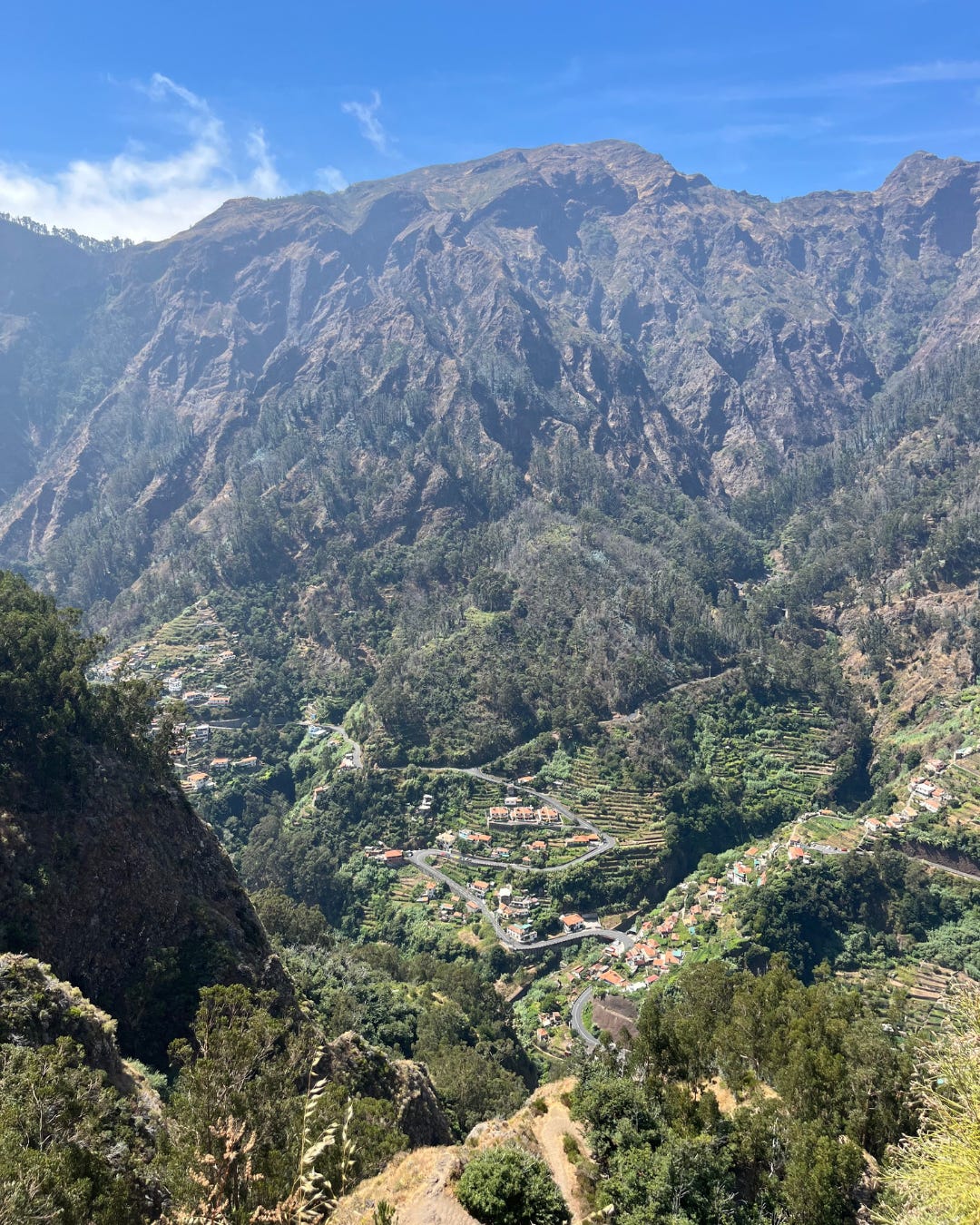
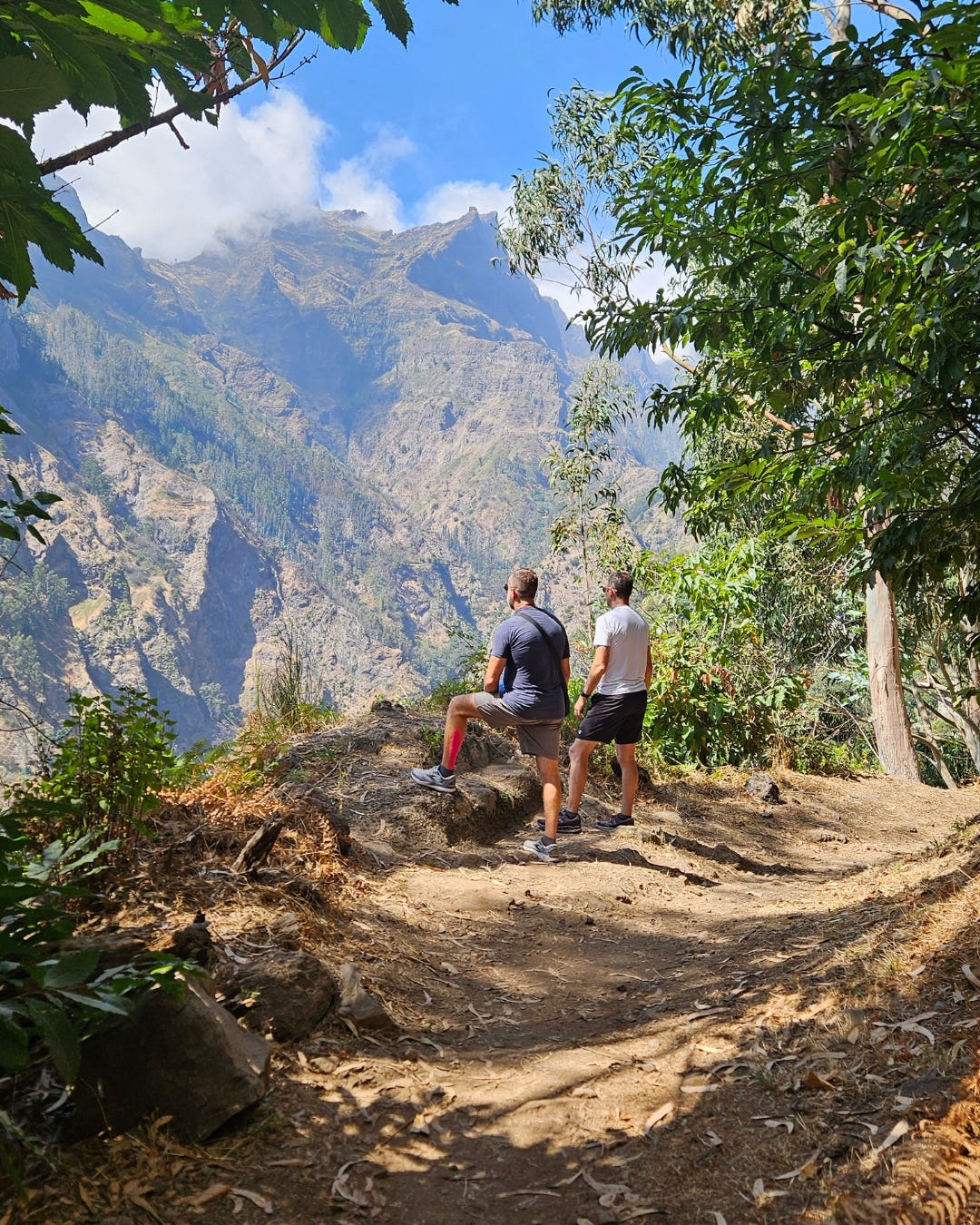
Thoughtful reflection…I’m retired, living in northern Portugal and starting my first Camino in two weeks. We’re starting and coming back next year to continue. No longer in the transition time, more like taking advantage of the gift that is my life at almost 70.
Such a beautiful place!! I am in a transition space ... shifting from having kids living full-time at home while simultaneously testing out playing and working remotely with my husband for longer stretches. Taking action towards our future has helped us shift out of the transition zone - and feels pretty awesome, too!